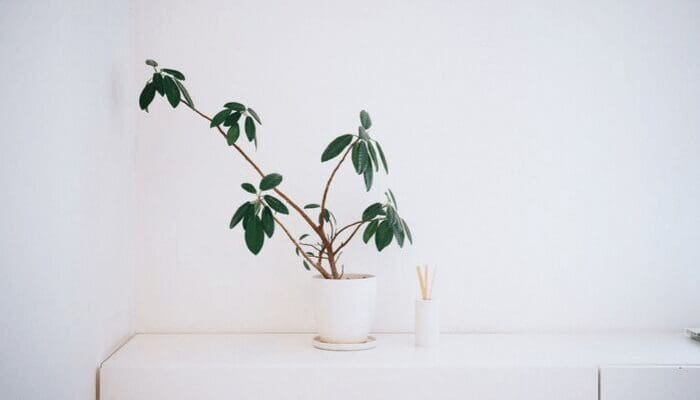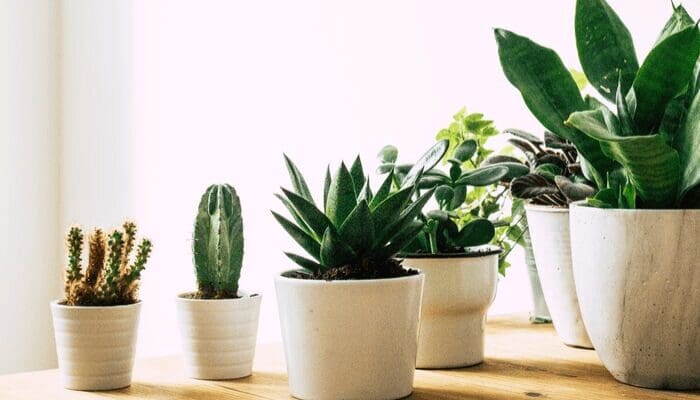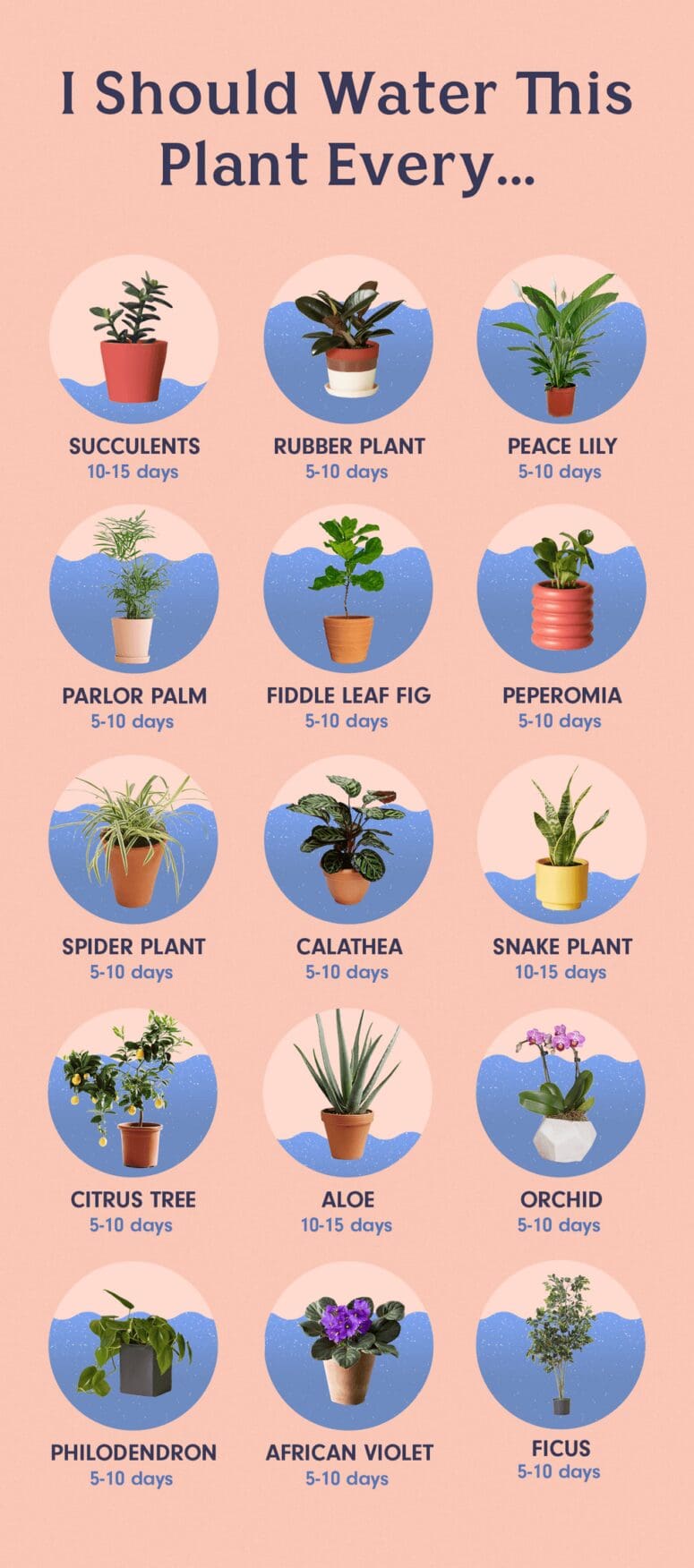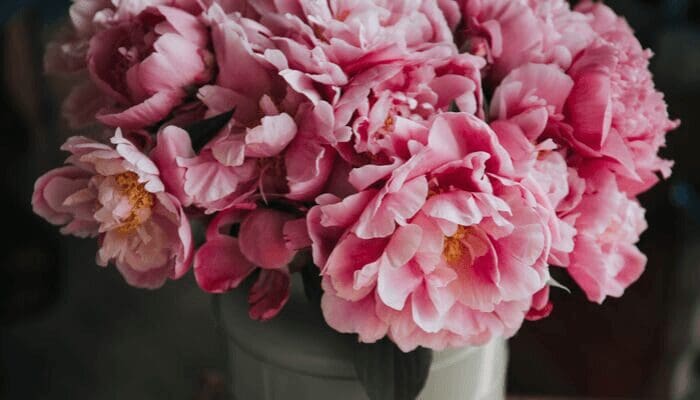The Black Thumb’s Guide to Staging a House with Plants
- Published on
- 6 min read
-
 Christine Bartsch Contributing AuthorClose
Christine Bartsch Contributing AuthorClose Christine Bartsch Contributing Author
Christine Bartsch Contributing AuthorFormer art and design instructor Christine Bartsch holds an MFA in creative writing from Spalding University. Launching her writing career in 2007, Christine has crafted interior design content for companies including USA Today and Houzz.
Do an online search for photos of “staged rooms” and you’ll see that almost every image has plants in the picture. Those that don’t have plants in frame look incomplete—and if those rooms were staged by a pro, photos from other angles would likely reveal at least one or two potted plants.
Plants are a go-to décor item for pro stagers because houses are basically boxes filled with equally boxy furniture. That translates to rooms with a lot of hard, geometric lines and synthetic textures.
The organic lines and vibrant emerald hues of plant life break up those sterile, artificial environments, transforming the spaces from furniture showrooms into cozy homes.
“Plants definitely add to the atmosphere and make a home feel more warm and inviting—unless they’re dead,” says Charlotte Trone, a top New Mexico agent whose sold 66% more properties than the average agent in the Albuquerque area.
“For home sellers who have trouble keeping plants alive, you have to find alternatives that are easy to maintain.”
Adding a touch of mother nature into your home staging design plan is easier said than done for gardening-challenged sellers. Let’s take a look at your best bets for keeping green things growing in your home—and your options if living plants are a no go.

Know where the plants you buy will go
“I like to put plants in the home’s entryway, and on tables, like the kitchen and dining room tables, and bedside tables,” says Trone.
“Also, if you have any awkward, empty spaces that you don’t know what to do with it, fill it with a taller plant in a good-sized pot to give the area purpose.”
Knowing where you want to stage with plants is the first and most essential step—and it’s not just about finding the best spots where plants can help your house sell.
Knowing where they’ll go before you buy is vital to keeping your plants alive. Picking plants without considering where they’ll live is probably why they keep dying on you.
Just think about the last time you tried to become a plant grower:
Your experience probably started in the gardening center, wandering the rows of lush foliage, the scent of damp soil and delicate floral fragrances mingling as you picked out the perfect plant and pot.
Once home, you carefully pulled off the plastic container and tucked it into your brand new planter, filled with fresh soil and plenty of fertilizer. Then you lovingly set your brand new plant on your sunniest window sill and watered it every day—maybe even twice a day.
Cut to a few weeks later, and that carefully selected and tended plant is now a brown, shriveled mess that you’re tossing into the trash. If you’re certain that you’ve got a black thumb, you’ve probably been through this scenario more than once.
But it’s not your thumb that’s to blame. Maybe those plants you tried to grow just needed less water, or indirect sunlight, instead.
Surprisingly, there are expert gardeners in the world who say that there is no such thing as a black thumb. All that stands between you and that hearty, thriving plant you’ve longed to grow yourself is: knowledge.
You see, the trouble is that you were picking plants based on your personal preferences, instead of picking plants able to thrive in conditions of the environment where you wanted to place them.
That’s a huge trap that you need to avoid when picking out plants for staging to sell.
When you’re selling a house, your primary goal when shopping for plants is finding ones that fit best in the empty spaces that need filling to help show off your house in the best light.
But knowing where the plants will live can’t just be about the aesthetics. For true green-thumb gardeners, the best place for a plant is an environment where it’ll thrive.
So, if you want your plants to stay alive for the duration of the time your house is on the market, you need to know where you want to place your plants before you buy—so that you can pick plants that will thrive in that specific environment.
You need to know:
- If the area gets direct or indirect sunlight
- If the area gets morning or afternoon sun
- The direction that the window providing the sunlight is facing (north-facing, south-facing, etc.)
The type and amount of sun plants will get in the environment where you want to place them not only tells you which plants will thrive in those areas, it also impacts how much and how often you’ll need to water them.
The more you can tell your local gardening center pros about the environment where the plants will go, the easier it’ll be for them to help you pick out plants that’ll live and thrive until your house sells.

Pick hard-to-kill plant varietals
Picking plants with growing conditions that match the environment where you want to plant them won’t automatically make you a great gardener.
Knowing the right amount and type of sunlight is just the beginning of a plant’s needs. You also need to research its other needs, such as the best type of soil, humidity conditions, how frequently it needs to be watered, how much water it needs when you do water, and if their needs change with the seasons.

That’s a lot of work for greenery that you’re mainly buying as a temporary décor element for the weeks it’ll take your house to sell.
Thankfully, there are plenty of hard-to-kill houseplant varietals able to thrive in all sorts of sunlight conditions that can survive weeks of your inept tending.
“Succulents are a viable solution to add a pop of greenery because they don’t require much water or attention,” says Trone. “Ferns are good, too. And elephant ears are great if you have a big space to fill. If you need a tall plant, potted palm trees are a good option.”
Here are just a handful of hard-to-kill options:
- Jade plants
Once established, this resilient succulent is best with at least four hours of afternoon sunlight, and grows best when its soil is allowed to dry out completely in between watering. - Snake plants
Known as one of the easiest succulents to grow in almost any type of light, this long, tall varietal is mainly vulnerable to overwatering. - Spider plants
An easy-to-grow option for indirect sunlight areas, this lily family member may need watering up to once a week depending on the type you pick. - Rubber plants
A tall-growing, indirect sunlight option, rubber plants are a black thumb favorite because they don’t require heavy watering, just don’t leave standing water in the planter saucer or they’ll get root rot. - Pothos plants
This vining variety often planted in hanging pots does best in bright, indirect light, and requires moderate water infrequently enough to allow the soil to partially dry in between watering.
While it’s important to pay close attention to the needs of any houseplants you purchase to help stage your home, don’t forget about those other little living things in your household that depend on you for survival, namely your toddlers and pets.
Your littlest loved ones are the most prone to chewing on any new houseplants you introduce into your home. So ask your gardening center pros to recommend non-toxic, hard-to-kill plants that won’t risk harming curious kids and furry friends if consumed.
Stick with impossible-to-kill fake plants
Hard-to-kill doesn’t mean it’s impossible, so if you’re at all worried about your ability to keep plants alive during the short period that your house will be on the market, then you may want to consider the fake plant option.
Faux flora has been around for centuries and artificial flowers were once de rigueur on ladies’ hats, however, fake house plants were long considered tacky because they were so obviously fabric or plastic.
Not anymore.
Those cheap-looking “perfect” plastic plants of decades past are history. Today, artificial foliage artisans have learned to mimic mother nature’s imperfections—making it hard to tell the difference between fake plants and real ones.
The best part is that gorgeously realistic, artificial plants are available in a wide variety of styles and sizes, so you can get ones to stage any locale in your house. And you don’t have to worry about their sunlight or water needs at all.
Just keep in mind that the fact that artificial plants are pricier and permanent. You can’t just toss these houseplants into the compost heap once you’re done with them after your house sells.
Pot underwhelming plants in eye-catching containers
So, you’re opting to grow real houseplants, but you’re underwhelmed with the size and selection of varieties available that will thrive in your home’s environment. Well, don’t default to fake flora just yet.
The impact your unimpressive houseplant makes on a space can be greatly improved simply by picking an impressive planter.
“There are a lot of planters that look like ceramic or clay pottery, but they’re actually plastic and you can’t even tell,” says Trone.
“What really matters is the style you pick. Your planters need to match or complement the style of your house. If you have farmhouse or modern style décor, you want to stick to that style for your planters.”
Selecting the right planter in your home’s décor style is your opportunity to add a pop of color or even extra height with pretty indoor plant stands. You can even get extra elevation with hanging planters.
But, black thumbs should note that choosing planters isn’t all about aesthetic appeal. The pot you pick could have a major impact on the health of your plant.
If you’re at all worried about overwatering, you’re better off planting in porous clay pots. Clay pots absorb extra moisture (which is why they get darker and damp to the touch), and allow excess water to evaporate through the pot.
Plastic and ceramic pots are non-porous, which traps excess moisture inside, and leads to plants dying from root rot.

Beware of bouquets: Steer clear of the fresh-cut flowers option
If you’re still leery about your ability to grow houseplants, and you don’t want the expense and permanency of artificial flora, you may be tempted to bypass both options for fresh-cut flowers.
Do yourself a favor, and don’t do it.
“You don’t want a whole house full of flowers, especially since some of your buyers might have allergies,” advises Trone. “Plus, they die pretty fast, and the water can start smelling bad if you don’t replace it frequently.”
Floral bouquets might work for a one-time open house, but they won’t last throughout the number of weeks you’ll have it on the market.
Buyers often schedule private showings at the last minute, which means you won’t have enough notice to run out and buy fresh flowers for each one.
When in doubt, ask an expert
Keeping plants alive isn’t easy if you’re not a naturally gifted gardener. Luckily, you’ll only need to keep those plants growing for the weeks that your house is on the market.
However, picking out the right plants that can survive your black thumb for the duration of your home sale is not a project to be tackled without help.
For starters, ask your real estate agent about the best places to stage with plants to help your house sell.
Next, take lots of photos of the areas where you want your plants to grow (showing both morning and afternoon sunlight conditions), and bring them along when you head to your local garden center.
Armed with those images, a gardening expert can help you find plants that won’t die on you—well, at least not immediately.
Header Image Source: (Daniel Hjalmarsson/ Unsplash)
